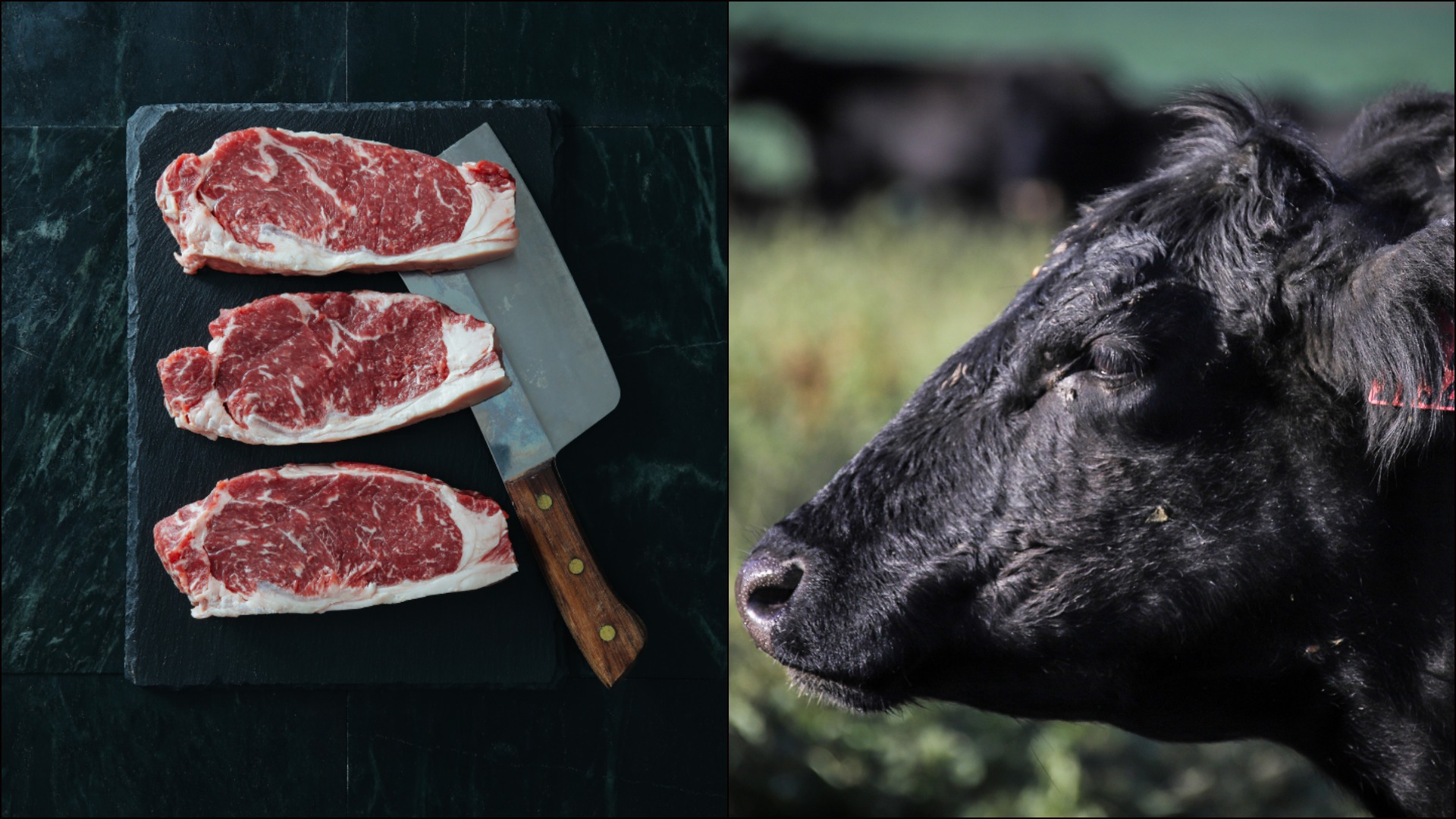What's The Deal With Certified Angus Beef?
I was 18 years old when I first started buying beef to cook for myself. At that time, the butchery section of the supermarket was a generally bewildering place, but no label was more mysterious to me than the small "Certified Angus Beef" sticker, which seemed to promise quality while providing no information whatsoever about what I could actually expect from the meat.
It wasn't until 2018, while attending the annual Certified Angus Beef (CAB) conference in Hawaii, that I learned CAB is both a nonprofit LLC owned by the American Angus Association (which had invited me to the conference) and a certification granted by the USDA, which inspects beef in order to ensure that it meets ten "carcass specifications" related to marbling, size, and uniformity. If the inspected beef meets those specs, and if it comes from an Angus cow (more on that in a second), it qualifies as being "Certified Angus Beef." As noted by the seminal meat site Amazing Ribs, beef that meets CAB requirements must be either USDA Prime or one of the top 2 levels of USDA Choice. All of this means that, unless something has gone wrong, CAB steaks should look good, have good marbling, and should be tender and tasty when correctly prepared.
What's funny about the Certified Angus Beef designation, though, is that the meat doesn't come from cows proven to be Angus via lineage or genetic testing; the cows essentially just need to be black in color and have physical characteristics associated with the Angus breed. Here's what the Certified Angus Beef LLC has to say about this, with one quote coming from their consumer-facing website, and the other from their producer-facing website:
- For consumers: "Angus cattle, which are known to produce higher quality beef, are typically black in color. This black hair trait is a strong indicator of Angus genetics, and has become the USDA standard by which cattle are considered for all Angus brands and products. Beef that qualifies for any Angus brand, including ours, is determined not by pedigree, but rather by traits, like hair color, that are highly associated with the Angus breed."
- For producers: "To be eligible for our brand, cattle must first pass visual appraisal to qualify as 'Angus type.' What's that mean, exactly? Each steer or heifer must have a predominantly black hide, with no other color behind the shoulder, above the flanks, or breaking the midline, excluding the tail."
What difference does the lack of pedigree make? I would argue probably not much. Regardless of whether a cow is through pedigree Angus, the beef itself is inspected by the USDA and meets certain objective criteria. Regardless of the actual genetic lineage of the animal, those characteristics indicate it should be tasty.
CAB-labeled beef is a bit more expensive than not, but if you find yourself standing at the meat counter and aren't entirely sure how to gauge how one steak will taste compared to another, the CAB sticker at least tells you that the beef has been certified by the government to have qualities associated with good flavor.
